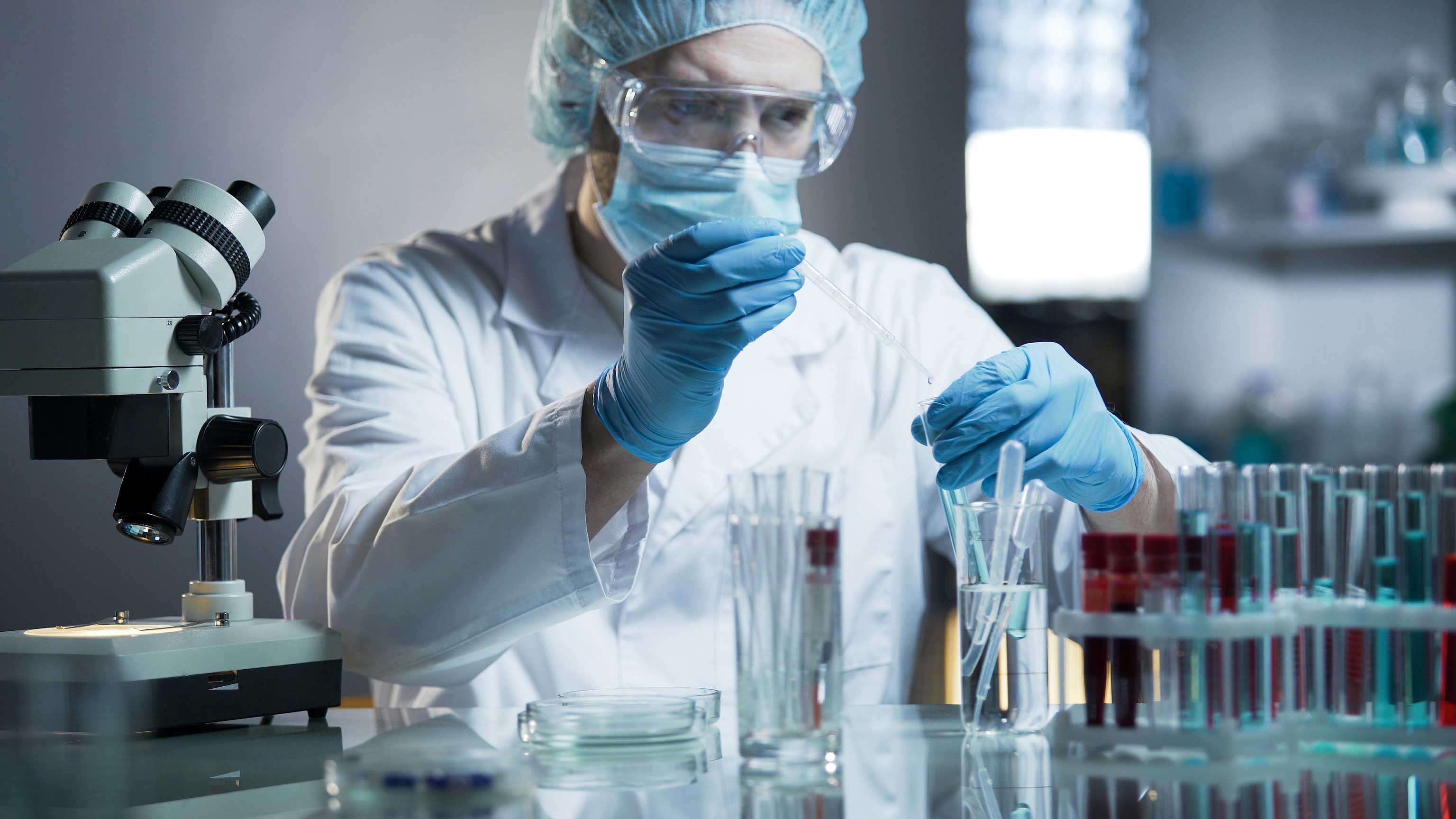Recommended For You
As single-use bioprocessing moves toward commercial-scale manufacturing applications, the industry is demanding more innovation.
Billy Sisk, Life Sciences Industry Manager EMEA, Rockwell Automation, talks about the biggest challenges faced by solution providers trying to stand out in the biopharma manufacturing space, and gives advice on how to stay ahead of the innovation curve in single-use systems.
Q: What opportunities do single-use systems provide compared to traditional stainless steel?
Single-use is gaining momentum because of the major changes and recent paradigm shifts in how drugs are manufactured. The focus on hyper-personalised medicine means that some manufacturers are producing single batch sizes for individual patients.
To achieve more complex biotech and personalised medicines, the industry is driving towards single-use systems – and that’s creating opportunities for manufacturers and benefits for patients.
- The building footprint for single-use facilities is much smaller than traditional biotech manufacturing facilities. Moving from 20,000 or 30,000 litre stainless steel bioreactors to smaller, single-use bioreactor systems eliminates associated equipment like cleaning and steaming and reduces the requirements for purified water generation. The result is reduced capital costs – in some cases as much as 30%-50%.
- Single-use has a faster facility start-up time. Less equipment means faster installation; no units to clean and sterilize speeds up the process so manufacturers can get drugs to market faster.
- When the facility is up and running, there’s typically less downtime between production runs and batches, which allows you to get more product through your facility. The main reason: cleaning time. In a stainless-steel biotech plant, you’re producing batches in large tanks. Cleaning and sterilizing can take 1-2 days. In a single-use system, typically the product is made in disposable bags that can changed in a period of 2-4 hours. Moving from days to hours gives you more flexibility and speed.
In a single-use facility there’s less cost because you’re using less of everything – chemicals, water and energy. You’ve reduced maintenance because you have less equipment, less complexity in the equipment, and fewer things to maintain and validate. Your staffing requirements are lower – yet you have more flexibility to deliver personalised medicines to the market.
Q: When building a single-use system, what do you need to keep in mind? Is there anything else you would want to add to that?
When you design and develop a single-use facility, challenges include:
- Limited availability of single-use equipment – especially downstream. For example, chromatography – there aren’t many options available in the market.
- Lack of standardisation and regulation, particularly around single-use materials – everything from the material composition of the hoses to the connections and bags. When you’re buying consumables, you are tied to a vendor who might set up their equipment to only work with their consumables.
- Consumable bags can cost anywhere from €1,000 (for smaller bags) to €20,000 for larger bags. When you’re making multiple batches, you need many consumables per batch. While the cost of single-use consumables is coming down, it is still a large cost.
- Consumable integrity. Little air leaks and holes in the bags or in the tubing is difficult to spot and can lead to the loss of a batch.
We are buying from four or five OEMs. Integrating different equipment from different vendors into a single manufacturing process stream can be quite complex.
And don’t forget about mobility. For things like single-use totes and filtration equipment, when you get above a 500 litre capacity, it becomes very difficult to physically move, so you need a strategy around how to move equipment and track it within the facility.
Q: With growing product diversity, increasing demand and high development costs in the biopharma manufacturing space, what solutions are Rockwell using to innovate their single- use disposable technologies?
At Rockwell Automation, we’ve developed solutions for the single-use market to help increase the speed to market for end users, reduce risk and increase regulatory compliance. We do this through our technology.
In a typical single-use environment, everything is built around EtherNet/IP. We adopted EtherNet/IP as part of the single-use solution because it allows for equipment mobility and the addition of new and different equipment.
We are collaborating with GE Healthcare, one of the largest single-use OEM providers, and our strategic partner PTC, to develop innovative solutions around augmented reality to address mobility and quality challenges.
Our solutions visually guide the operator through the set-up process, connecting and disconnecting consumables and maintenance. This reduces the risk of human error that could jeopardize hyper-personalized batches and impact profitability and productivity – and ensures accurate data tracking to meet regulatory compliance standards.
Q: What are the tangible benefits of using automation in the biopharma manufacturing space?
As biopharma moves towards more complex manufacturing processes, automation plays a larger role in solving new challenges. Automated processes reduce risk and increase speed to market, as you more quickly execute batches and production cycles. Once you’ve set up your facility and processes, it’s all about how you can streamline and derive more value from your process.
End users are adopting industry 4.0; equipment is becoming more connected and delivering more data. Customers want to use that data to drive value throughout the supply chain and manufacturing process. As more equipment becomes automated, more data is collected and analysed for better decisions on the manufacturing floor.
Q: Is continuous bioprocessing on the horizon? Will it reduce the cost of goods?
Continuous manufacturing and continuous bioprocessing have been talked about for 15 years. We had some early adopters but many companies have been struggling with delivering fully continuous bioprocessing. Technology is evolving and with improvements in areas like sensors, measurement capability and real-time analytics, bioprocessing is getting closer.
As processing and production become more efficient, costs will be reduced. That’s because you’re measuring a process in real-time, understanding what’s happening. If during the batch production something starts to go out of sync, you’re at risk of losing that batch. The perception of continuous manufacturing is the process automatically adapts to that, changes it, and brings the product back within specification. It deduces the risk of something going wrong, of the product being lost. Also, you’ve got real-time sampling of product, where traditionally you would have to wait for the end of a batch.
You’re not only reducing the risk of lost batches, but you’re increasing the speed to market because you’re reducing the time that product sits in your warehouse waiting to be checked and released for quality. You have that data in a matter of hours versus weeks. So, again, that all helps reduce the cost of goods.
Q: How difficult is it for solution providers to stand out in the biopharma manufacturing space? How do you overcome these hurdles?
At Rockwell Automation, we listen to our customers. When we talk about the evolution in the last number of years in the biopharma manufacturing space, there’s been a large increase in the level of complexity in manufacturing. Our customers are going through clinical trials, starting up manufacturing facilities to make these products. They are closest to the process, so they see the problems early.
We listen to customers about their challenges and work with them very early in the process to create solutions to address their specific challenges. This is our differentiator in a very competitive market space.
While other companies have products that address some challenges in this industry, our technology investments, combined with our strategic partnerships, allow us to differentiate our innovation and deliver better business outcomes for our customers. Our solutions help reduce compliance risk, improve and increase the levels of security of their facilities, and ultimately deliver medicines to market faster for their patients.
Typically, pharma and biopharma companies are more conservative technology adopters. While we’re adapting modern technology solutions like augmented reality to implement in the industry, some customers, because they have extremely regulated processes and regulated manufacturing facilities, are slower than other industries to adopt that technology.
That’s why we work with customers at the very earliest stages of a problem, so we can develop the precise technology to solve a unique business challenge. Thankfully, regulators are now embracing new technology because it’s critical to producing more innovative treatments for the patients.
We will be discussing more about scaling single-use bioprocessing operations at the Disposable Solutions for Biomanufacturing Global event 18-20 February in Berlin, Germany. We hope to see you there.
Published February 7, 2020


